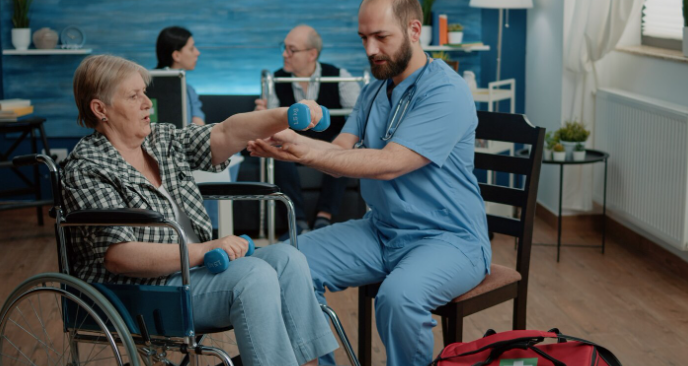Recovery from addiction is rarely a solo journey. For many individuals entering a residential rehab program, community support becomes one of the most powerful forces driving healing and long-term sobriety. Beyond professional therapy and structured routines, the sense of belonging, understanding, and accountability that comes from a supportive community can make all the difference between relapse and resilience.
Understanding the Role of Community in Recovery
Residential rehab programs are designed to provide a safe, structured environment where individuals can focus entirely on addiction recovery. But while clinical care addresses the physical and psychological aspects of addiction, community addresses the emotional and social dimensions.
Humans are social beings, and addiction often isolates people from their loved ones and society. Community support in rehab helps bridge that gap. It offers a sense of inclusion, reduces loneliness, and provides a network of people who truly understand the challenges of recovery.
Community in a residential rehab setting can mean several things:
- Fellow residents who share similar struggles and goals
- Supportive staff and counselors who offer empathy and guidance
- Group therapy and peer support sessions that encourage openness and mutual respect
Together, these elements form a foundation of trust and belonging, both of which are essential for sustainable recovery.
1. Creating a Safe and Judgment-Free Environment
One of the most immediate benefits of community support is the creation of a safe, non-judgmental space. Many individuals entering treatment carry guilt, shame, or fear of being misunderstood. In a strong rehab community, these barriers start to break down.
When residents share their stories and emotions without fear of criticism, they begin to heal emotionally. Listening to others’ experiences helps them realize they are not alone in their struggle. This shared empathy often becomes the first step toward rebuilding self-esteem and self-worth — crucial elements of long-term sobriety.
2. Building Accountability and Structure
Recovery requires consistency and discipline, and community support naturally reinforces both. In residential settings, group activities, therapy sessions, and communal living foster a routine where everyone plays a role.
Residents encourage one another to attend sessions, stay committed to goals, and celebrate small victories. When someone struggles, others step in with understanding and encouragement rather than judgment. This peer-driven accountability helps individuals stay on track, even on difficult days.
Moreover, it teaches responsibility — not only for one’s own recovery but also for the well-being of others. This shift from self-focus to shared support is transformative.
3. Learning Through Shared Experiences
Every person in rehab has a unique story, but the emotions and challenges of addiction often overlap. Sharing experiences in group therapy or informal discussions allows residents to learn from one another’s journeys.
Hearing how someone else managed cravings, rebuilt family trust, or handled relapse triggers can inspire practical coping strategies. It also promotes emotional insight — understanding that recovery is not linear and that setbacks are part of the process.
This peer learning environment builds resilience and reduces the fear of failure. When people see others succeed, they begin to believe they can, too.
4. Reducing Feelings of Isolation and Loneliness
Addiction thrives in isolation. Many people turn to substances because they feel disconnected or misunderstood. In contrast, community support reintroduces connection and companionship.
Group activities such as mindfulness sessions, outdoor recreation, or shared meals promote a sense of normalcy and belonging. These simple interactions — laughing together, helping one another, sharing goals — rebuild the social bonds that addiction often damages.
Over time, residents begin to replace destructive coping mechanisms with healthy, supportive relationships. This social healing is a powerful aspect of long-term recovery.
5. Encouraging Long-Term Sobriety and Aftercare
Community support doesn’t end when residential treatment does — in fact, it becomes even more important after discharge. Most rehab centers encourage alumni programs, aftercare groups, or continued participation in peer networks like 12-Step programs.
These communities provide ongoing motivation and accountability once individuals return to daily life. Staying connected to a supportive group helps prevent relapse by offering guidance, encouragement, and a reminder that they are not alone in their journey.
Many people also find purpose in giving back — mentoring newcomers or sharing their recovery stories. This sense of contribution strengthens self-confidence and reinforces their commitment to sobriety.
6. Enhancing Emotional Healing and Self-Discovery
Beyond practical support, community fosters emotional growth. Through interaction, individuals learn empathy, communication, and vulnerability — skills often dulled by addiction. Being part of a group that accepts them unconditionally encourages self-acceptance.
As residents connect with others who have walked similar paths, they start to rediscover who they are beyond addiction. This emotional healing often becomes the foundation for building a fulfilling, sober life.
7. The Science Behind Social Support and Recovery
Research consistently shows that strong social support improves mental health outcomes and lowers relapse rates. A study published in Addiction Research & Theory found that individuals with strong peer connections were significantly more likely to maintain sobriety after treatment.
Social support reduces stress, improves mood, and boosts motivation by releasing oxytocin and serotonin — the brain chemicals associated with trust and happiness. In simple terms, human connection physically strengthens the brain’s capacity to heal.
8. Community as a Lifelong Resource
Perhaps the greatest advantage of community support is its longevity. Unlike medications or therapy sessions, a strong support network can last a lifetime. Friendships formed during treatment often evolve into lifelong bonds that continue to inspire and guide recovery.
Many residential rehabs also foster alumni groups, community events, or online support platforms — extending the sense of belonging well beyond the facility’s walls. This continuity helps people maintain stability and optimism long after formal treatment ends.
Conclusion
Recovery is not just about breaking free from addiction — it’s about rebuilding a meaningful, connected life. In residential rehab programs, community support acts as both a mirror and a safety net: it reflects one’s struggles honestly while offering compassion and strength through shared experience.
The relationships formed in these settings remind every individual that healing doesn’t happen in isolation. It happens when people come together, share their stories, hold each other accountable, and believe — as a community — that recovery is possible.








